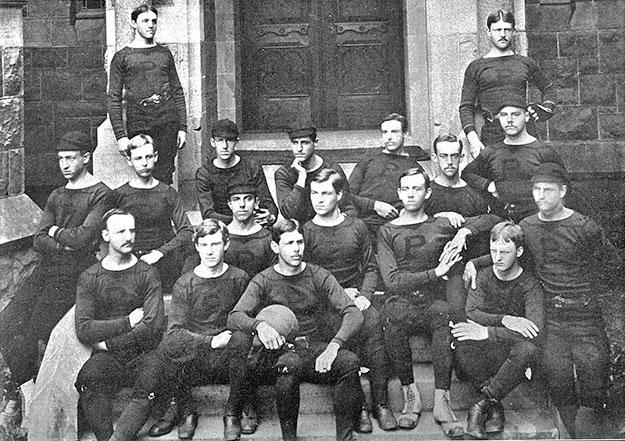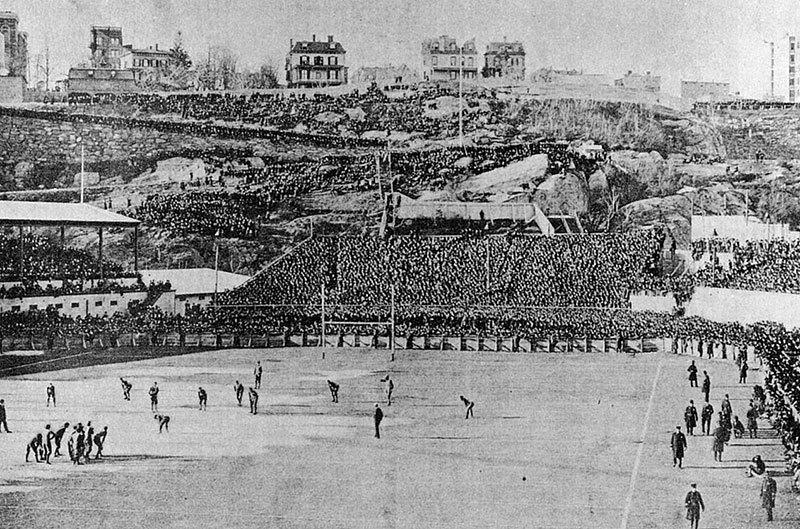Detroit and Dallas may have cornered the market for pro football’s Thanksgiving Day games, but the holiday’s gridiron tradition began well before the creation of the NFL.
On Nov. 30, 1876, Princeton and Yale faced off in Hoboken, N.J., playing what would best be described as an 11-on-11 form of rugby. Princeton entered the game with a 3-0 record and a fresh set of uniforms — black tights and jerseys with an orange P on the chest — but the Elis prevailed, two goals to none. The Princetonian, then in its first year of publication, questioned a few key calls by the referee, noting that he was “a Yale man.”
The Princeton-Yale game would eventually move to New York’s Manhattan Field, where it briefly became a Thanksgiving phenomenon. In 1893, some 40,000 spectators turned out to see the Tigers win a showdown of two unbeaten teams, 6-0. Richard Harding Davis of Harper’s Weekly described the stream of fans heading north before the game:
“[A]s the decorated horses and bedecked hansoms and brakes and coaches and omnibuses go galloping up the avenue there are special cheers of the orange flag and the big black P in front of the Sloanes and the Alexanders and the Scribners, and for the blue banners and white Y before the homes of the Whitneys and the Vanderbilts.”
Other college rivals launched their own Thanksgiving traditions, but Princeton and Yale decided to move their annual game to Saturday, in part because members of the Yale faculty objected to students playing on a holiday. The 1893 game would be Princeton’s last on Thanksgiving Day.













No responses yet